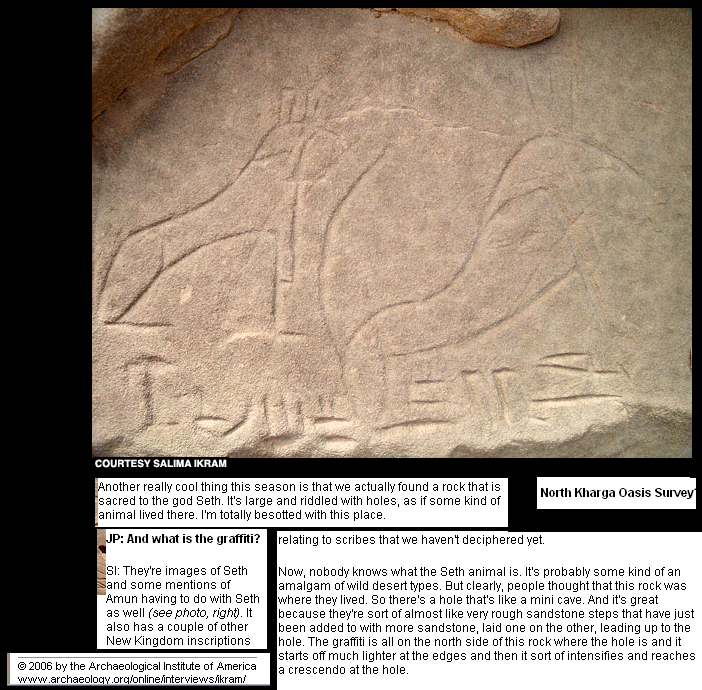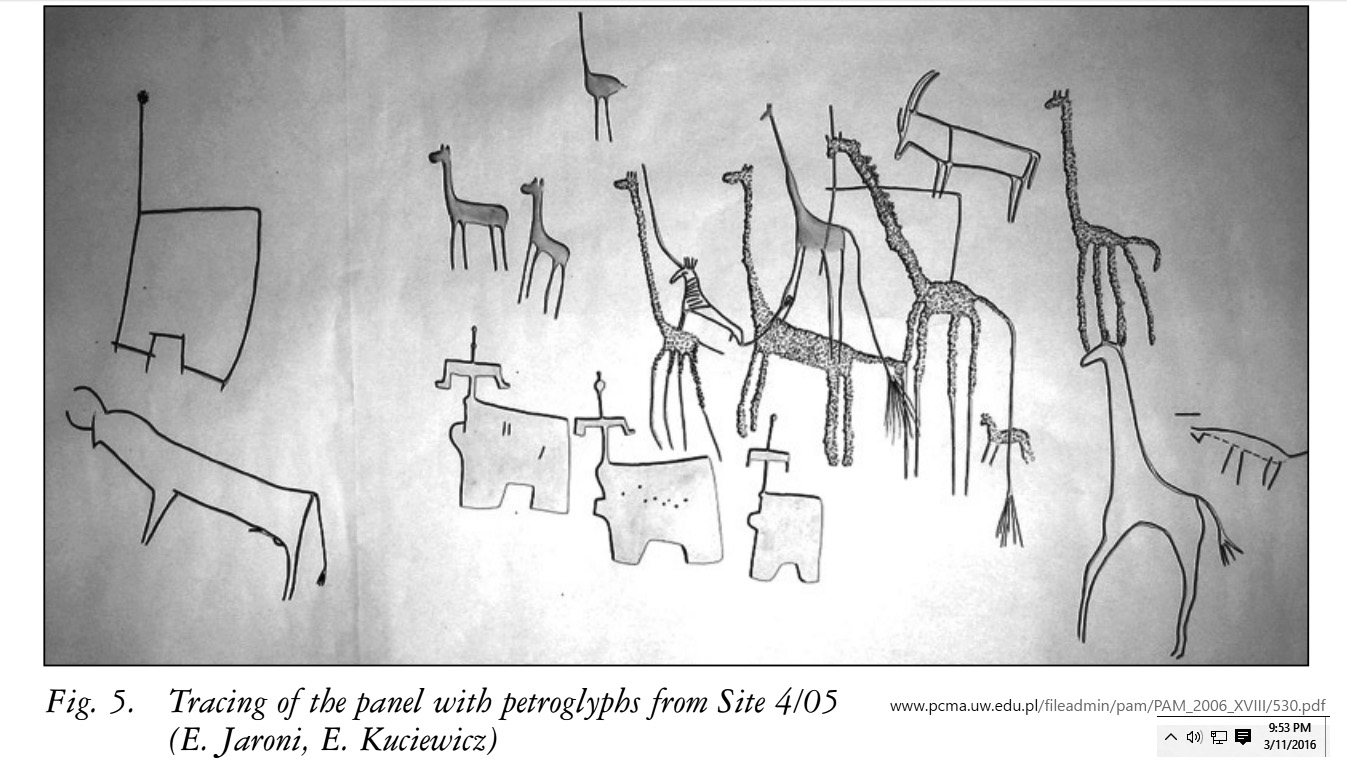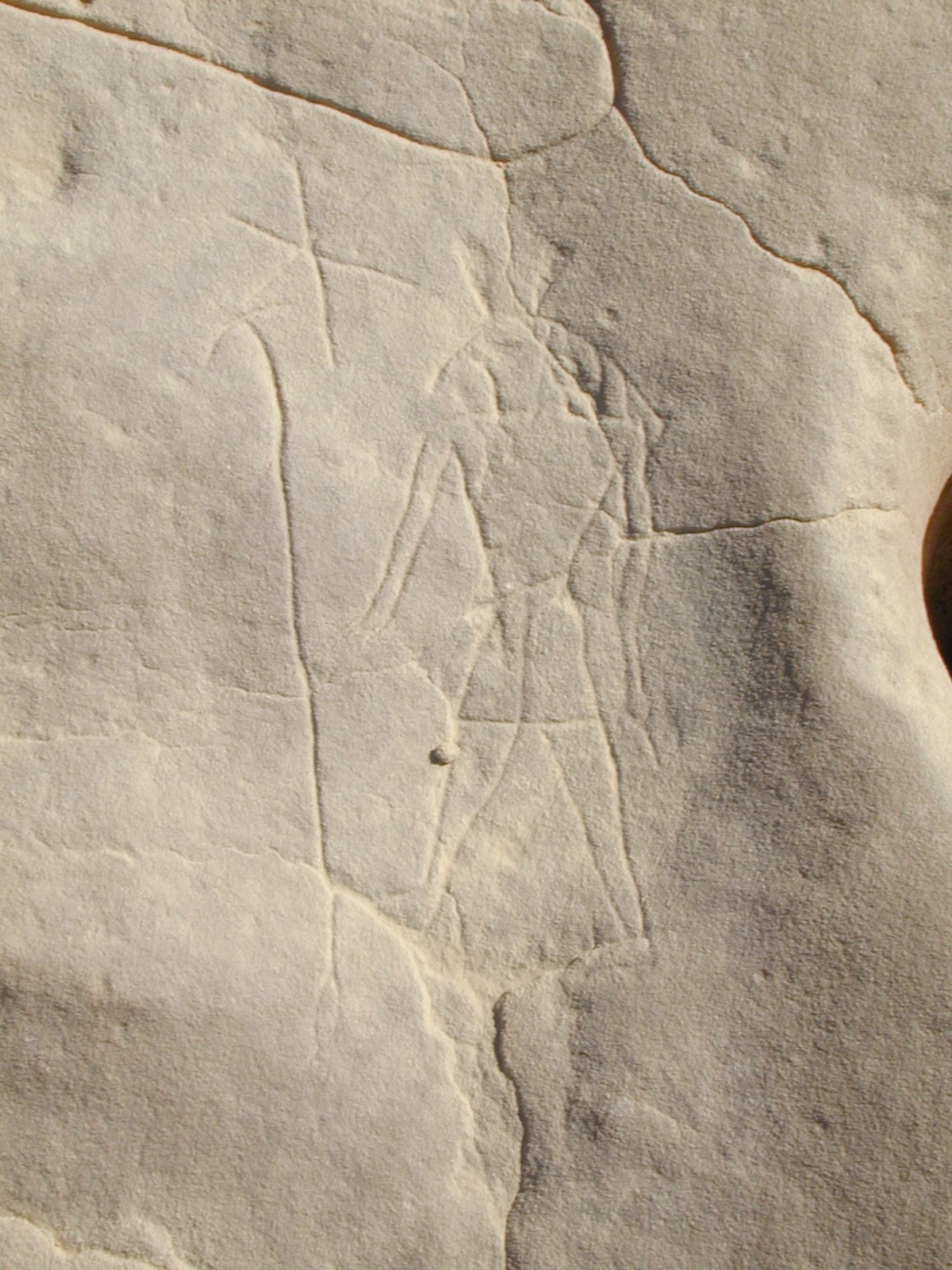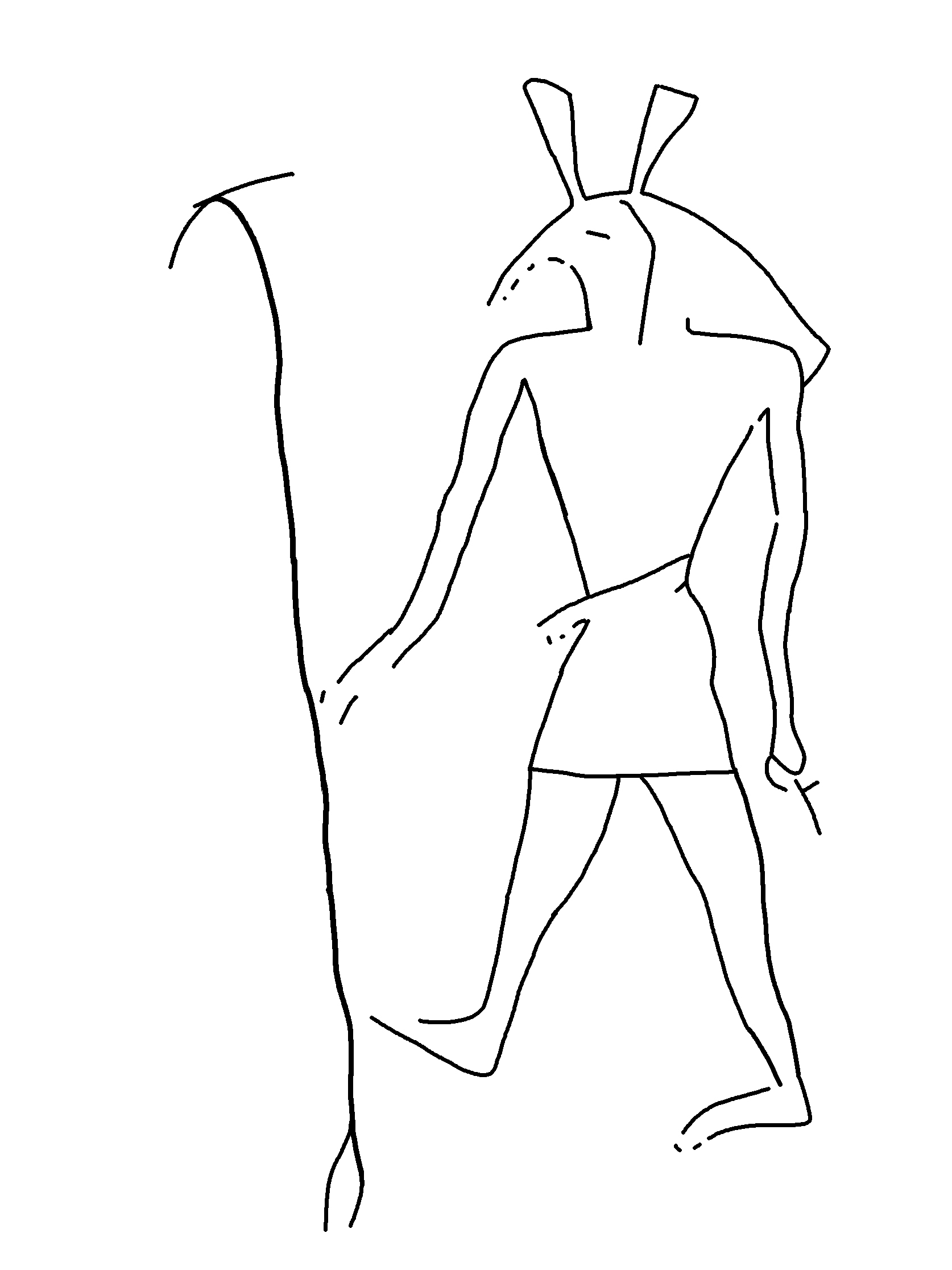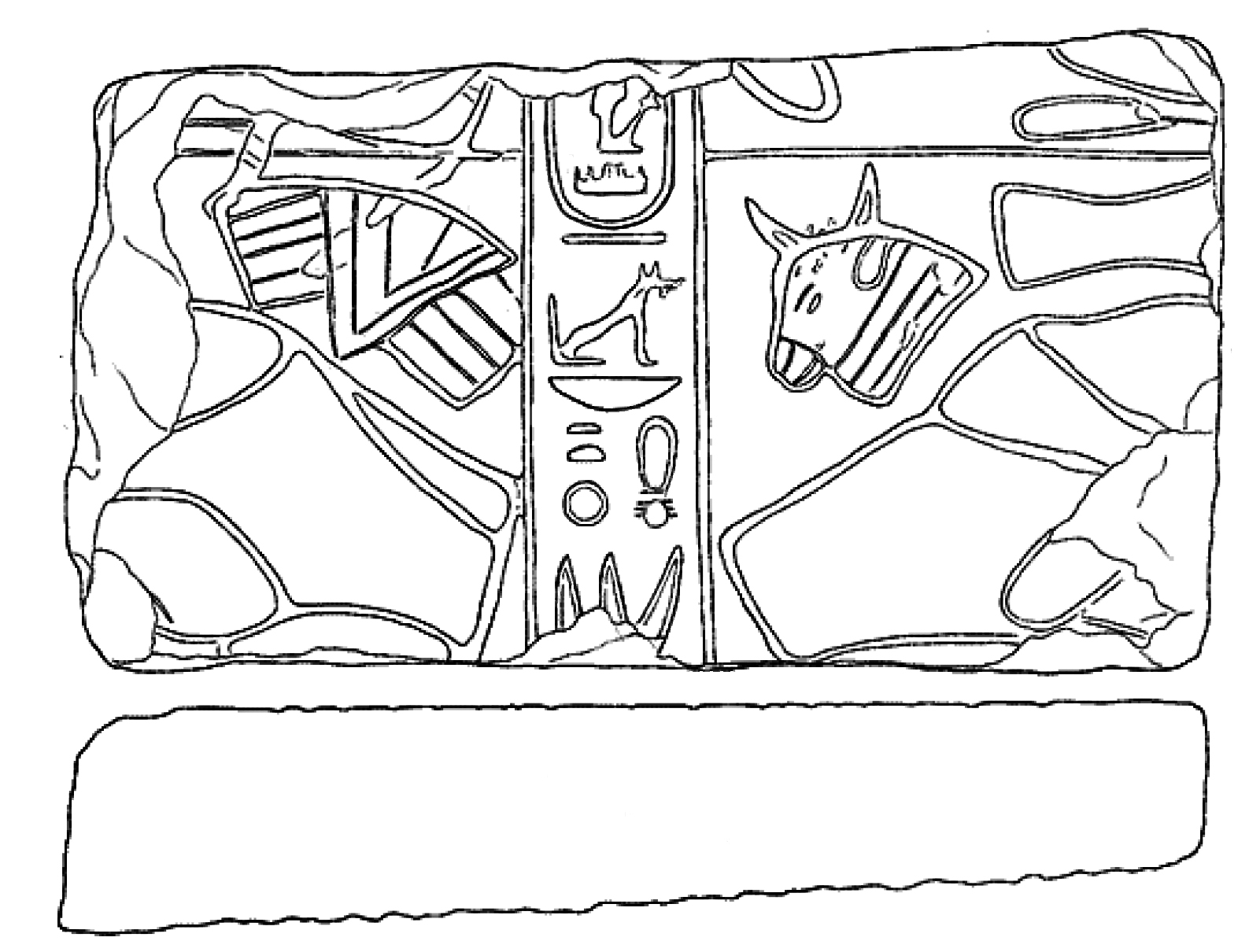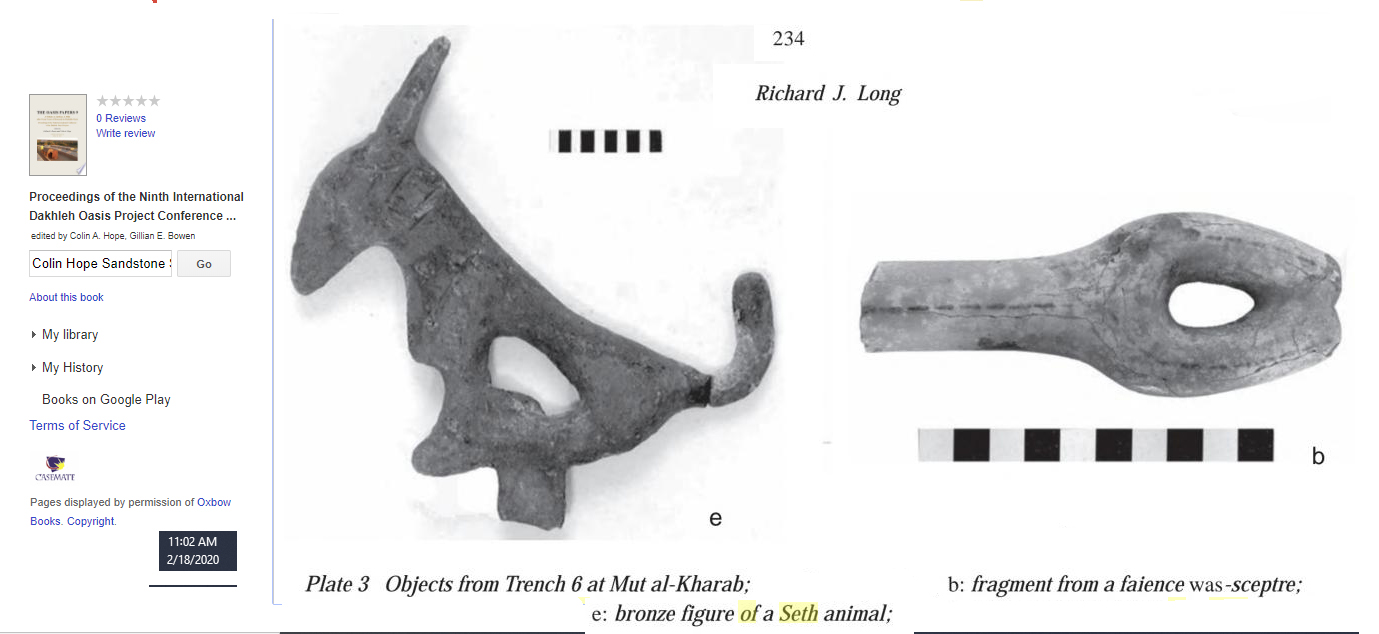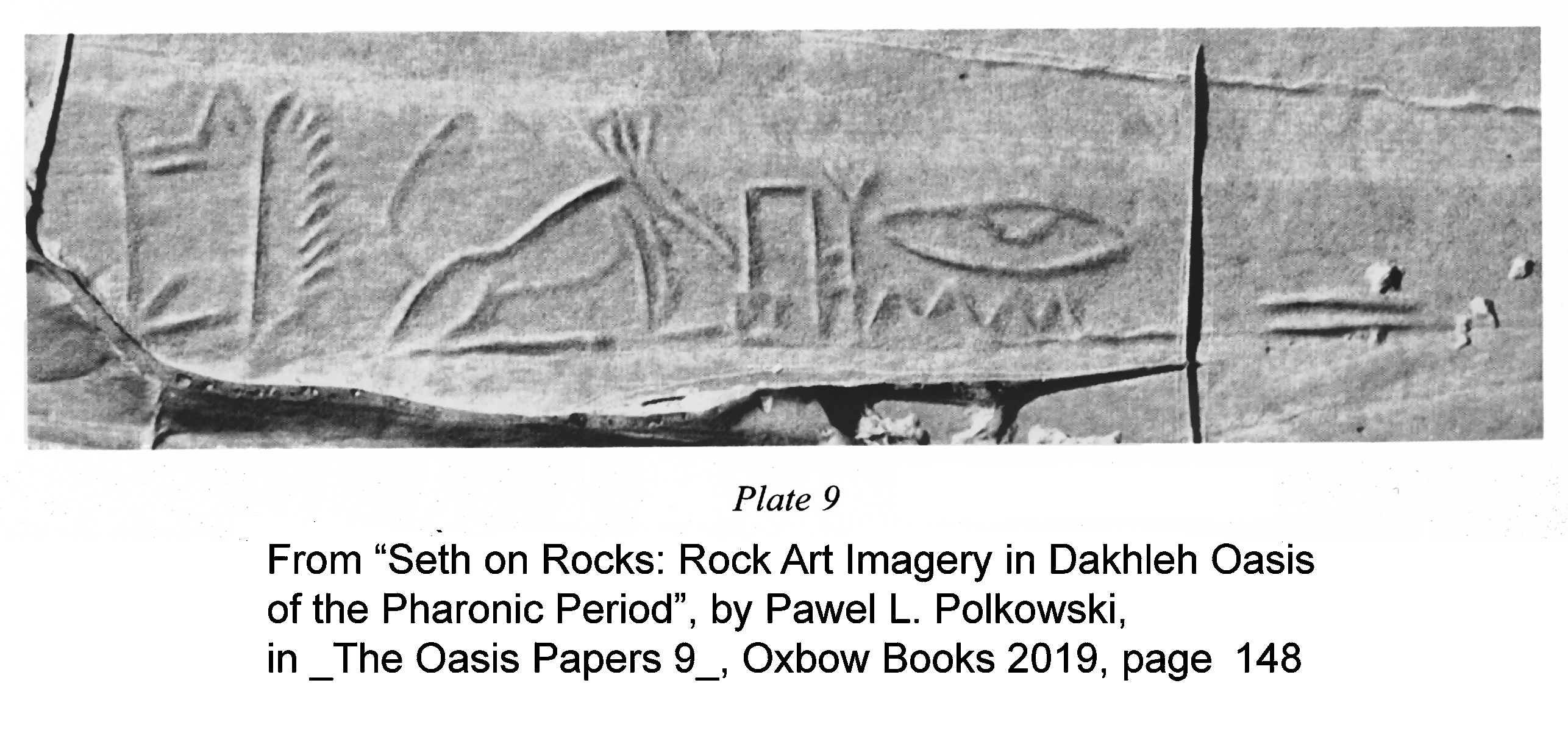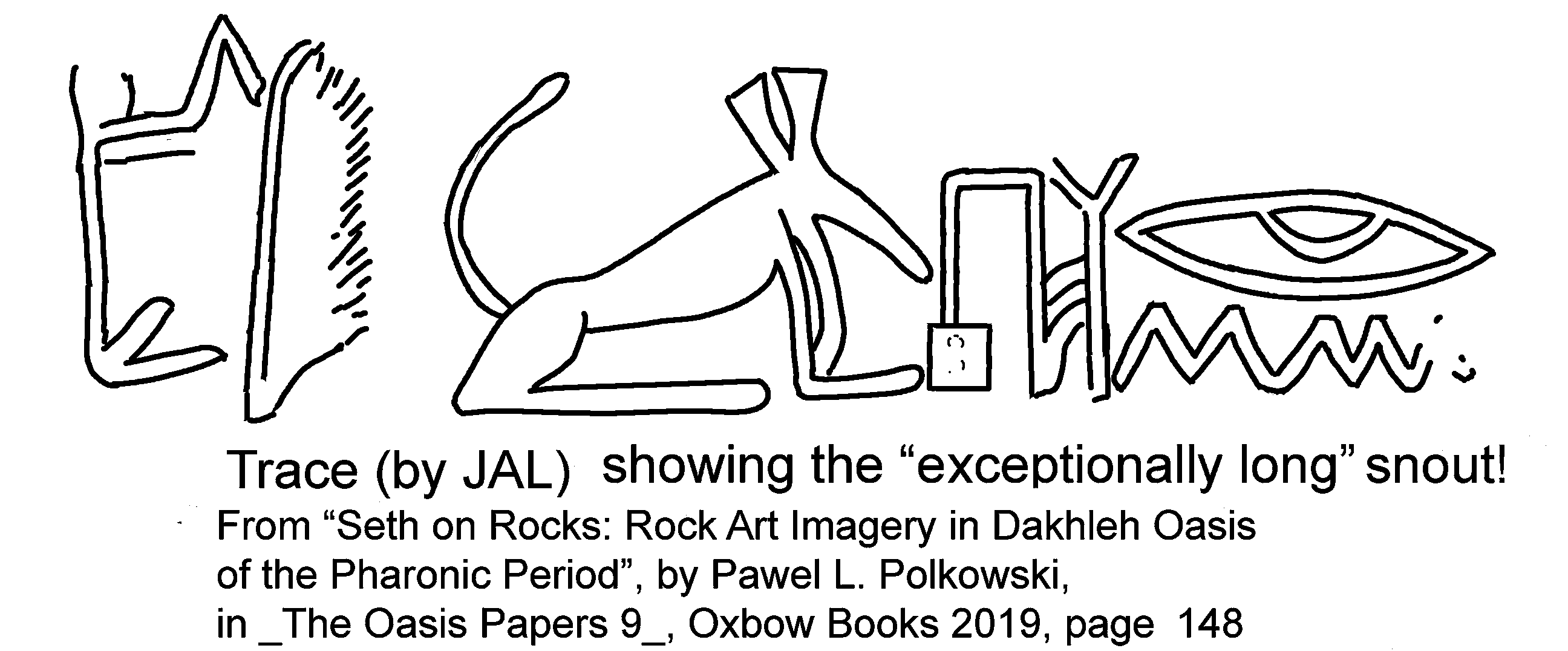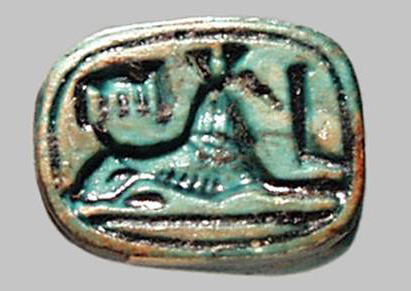Pawel L. Polkowski has a photo from this rock, which I scanned:
The Oasis Papers 9: Proceedings of the Ninth International Dakhleh Oasis Project Conference, Oxbow books 2019,
"Seth on Rocks: Rock Art Imagery in Dakhleh Oasis during the Pharonic Period", page 145He describes the scene so that we might better sort out the Set glyph from the giraffes:"The Seth figure (Plate 1) is superimposed upon three giraffes. However, it is mainly its tail and front legs that interfere with the older images, whereas the body is inserted between the necks of two giraffes. The style of execution may be termed as hieroglyphic and, doubtless, it was produced by someone skilled in the art of writing/sculpting. The image is of Gardiner's E20 type, depicting an animal sitting on its haunches. It has a typical Sethian muzzle: fairly elongated and slim, as well as slightly down-curved. The ears are erect and truncated. A characteristic of this representation is a collar in the form of seven parallel horizontal bands that may be compared with examples in the tombs of Khafkhufu in Giza and Sekerkhabau in Saqqara, and the Lisht temple of Amenemhat 1." (Pages 143-145) I've made a trace of the Set figure isolated from the giraffes: 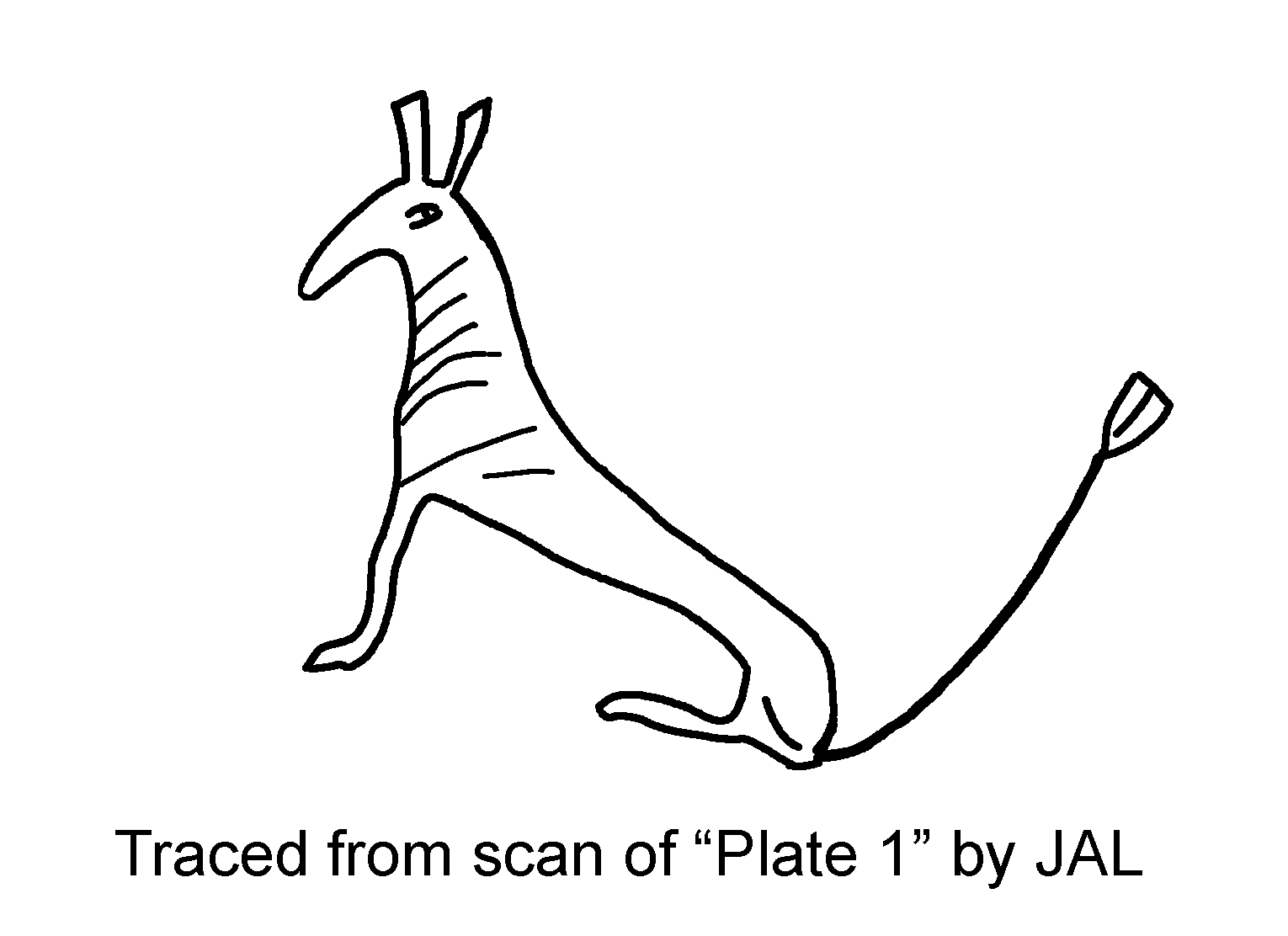 My findings in early 2020 were spurred by a happy find in my mailbox. I have special reasons to be glad I renewed my suscription to Archaeology. The article got me researching and sending for other books.From the March/April 2020 issue of Archaeology magazine, "Lord of the Oasis", author Benjamin Leonard explains, "In Egypt's Western Desert, worship of the mysterious god Seth thrived long after it waned elsewhere". My findings in early 2020 were spurred by a happy find in my mailbox. I have special reasons to be glad I renewed my suscription to Archaeology. The article got me researching and sending for other books.From the March/April 2020 issue of Archaeology magazine, "Lord of the Oasis", author Benjamin Leonard explains, "In Egypt's Western Desert, worship of the mysterious god Seth thrived long after it waned elsewhere".
From the March/April 2020 issue of Archaeology magazine, "Lord of the Oasis", author Benjamin Leonard explains, "In Egypt’s Western Desert, worship of the mysterious god Seth thrived long after it waned elsewhere". Recent "discoveries at Mut--an ancient city in the 770-square-mile expanse of the Dakhleh Oasis, one of five oases in Egypt's Western Desert" have "uncovered evidence for a ritual landscape over which Set presided as Lord of the Oasis. With the support of the state's central administration, as well as gifts bestowed by Egyptian pharaohs to ensure the temple's growth, the cult of Set thrived in Dakhleh and surrounding oases throughout the first millennium B.C. and into the Roman, though the second and third centuries A.D. At Mut and other cult centers and shrines across the desert, including his siblings, Osiris and Isis, and Amun, the king of the gods, not as an outsider, but as a significant and positive figure in his own right. 'There's some evidence for hostility to the cult in the Nile Valley, but clearly this did not extend into the oasis region, where Seth remained a dominant deity,' Hope says. 'The whole of the Western Desert was the domain of Seth and was under his protection." (page 34) "Seth's worship was not limited to the formal setting of a temple and offerings made by priests. Archaeologist Salima Ikram of the American University in Cairo and other researchers have identified petroglyphs of the god's image carved on rocks by ancient travelers journeying through the desert to and within the Dakhlet and Khargas Oases, most of which seem to date to the New Kingdom. These drawings typically depicted the Seth animal and are often accompanied by the names of the individuals who created them. Other examples portray the god with a falcon head, and are labeled as Seth. 'It's extraordinary because we have so many signs of individual piety by people who are putting themselves in a very personal way under the auspices of Seth,' Ikram says. Large quantities of the engravings are clustered in places that Ikram has identified as makeshift shrines to the god, such as a site now known as Seth rock. 'These are concentrated sets of dedications where people are saying, 'We are Seth's people, we are under his protection, and he will care for us,' she says." Not just the desert dwellers would declare this, but also those travelling to the deserts and passing through would pray to Set. (pages 36-37) >>>> Now in 2021, the "mission in Mut will try to answer one of the most important questions about this site: namely, was there a temple dedicated to Seth already in the Old Kingdom, that is shortly after the oasis had been colonized by the Egyptians? Remains of the period have been found but need more exploration. Dakhleh Oasis Project ( Environmental and Archaeological research ) via facebook |
